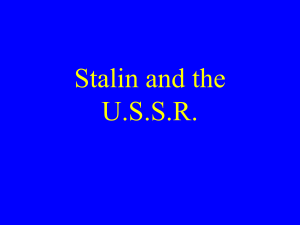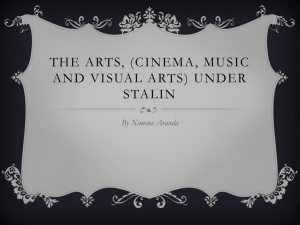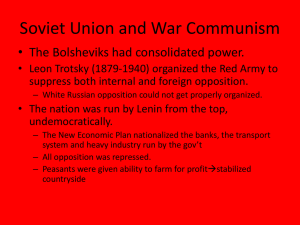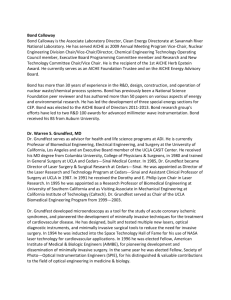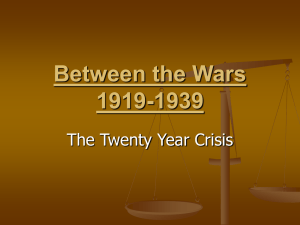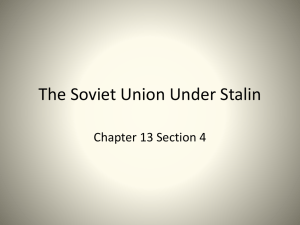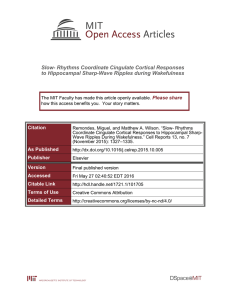Russian Revolution DBQ Discussion Guide
advertisement
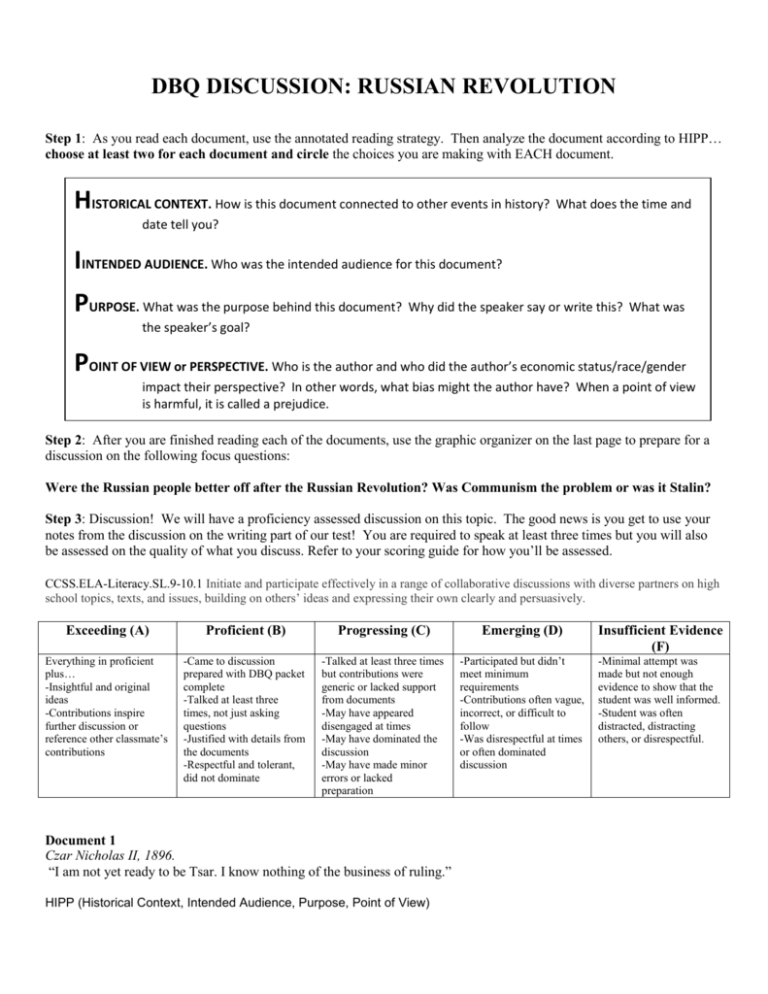
DBQ DISCUSSION: RUSSIAN REVOLUTION Step 1: As you read each document, use the annotated reading strategy. Then analyze the document according to HIPP… choose at least two for each document and circle the choices you are making with EACH document. HISTORICAL CONTEXT. How is this document connected to other events in history? What does the time and date tell you? IINTENDED AUDIENCE. Who was the intended audience for this document? PURPOSE. What was the purpose behind this document? Why did the speaker say or write this? What was the speaker’s goal? POINT OF VIEW or PERSPECTIVE. Who is the author and who did the author’s economic status/race/gender impact their perspective? In other words, what bias might the author have? When a point of view is harmful, it is called a prejudice. Step 2: After you are finished reading each of the documents, use the graphic organizer on the last page to prepare for a discussion on the following focus questions: Were the Russian people better off after the Russian Revolution? Was Communism the problem or was it Stalin? Step 3: Discussion! We will have a proficiency assessed discussion on this topic. The good news is you get to use your notes from the discussion on the writing part of our test! You are required to speak at least three times but you will also be assessed on the quality of what you discuss. Refer to your scoring guide for how you’ll be assessed. CCSS.ELA-Literacy.SL.9-10.1 Initiate and participate effectively in a range of collaborative discussions with diverse partners on high school topics, texts, and issues, building on others’ ideas and expressing their own clearly and persuasively. Exceeding (A) Proficient (B) Progressing (C) Emerging (D) Insufficient Evidence (F) Everything in proficient plus… -Insightful and original ideas -Contributions inspire further discussion or reference other classmate’s contributions -Came to discussion prepared with DBQ packet complete -Talked at least three times, not just asking questions -Justified with details from the documents -Respectful and tolerant, did not dominate -Talked at least three times but contributions were generic or lacked support from documents -May have appeared disengaged at times -May have dominated the discussion -May have made minor errors or lacked preparation -Participated but didn’t meet minimum requirements -Contributions often vague, incorrect, or difficult to follow -Was disrespectful at times or often dominated discussion -Minimal attempt was made but not enough evidence to show that the student was well informed. -Student was often distracted, distracting others, or disrespectful. Document 1 Czar Nicholas II, 1896. “I am not yet ready to be Tsar. I know nothing of the business of ruling.” HIPP (Historical Context, Intended Audience, Purpose, Point of View) Document 2 Pavel Miliukov, in speech given to the Duma, November 1916 Is this incompetence or is it treason? Does it matter practically speaking whether we are dealing with incompetence or with treason?...The government persists in claiming that organizing the country means organizing a revolution and deliberately prefers chaos and disorganization. HIPP (Historical Context, Intended Audience, Purpose, Point of View) Document 3 First World War Encyclopedia by John Simkin, 2009. Countries Total Mobilized Killed & Died Wounded Prisoners & Missing Total Casualties Casualties % Mobilized Allied Powers Russia 12,000,000 1,700,000 4,950,000 2,500,000 9,150,000 76.3 France 8,410,000 1,357,800 4,266,000 537,000 6,160,800 76.3 British Empire 8,904,467 908,371 2,090,212 191,652 3,190,235 35.8 Italy 5,615,000 650,000 947,000 600,000 2,197,000 39.1 United States 4,355,000 126,000 234,300 4,500 364,800 8.2 42,188,810 5,152,115 12,831,004 4,121,090 22,104,209 52.3 Germany 11,000,000 1,773,700 4,216,058 1,152,800 7,142,558 64.9 AustriaHungary 7,800,000 1,200,000 3,620,000 2,200,000 7,020,000 90.0 Ottoman Empire 2,850,000 325,000 400,000 250,000 975,000 34.2 Bulgaria 1,200,000 87,500 152,390 27,029 266,919 22.2 Total 22,850,000 3,386,200 8,388,448 3,629,829 15,404,477 67.4 Grand Total 65,038,810 8,538,315 21,219,452 7,750,919 37,508,686 57.6 Total Central Powers HIPP (Historical Context, Intended Audience, Purpose, Point of View) Document 4 John Reed, Ten Days that Shook the World (New York: International Publishers, 1934). All Russia was learning to read, and reading—politics, economics, history—because the people wanted to know. . . . In every city, in most towns, along the Front, each political faction had its newspaper—sometimes several. Hundreds of thousands of pamphlets were distributed by thousands of organisations, and poured into the armies, the villages, the factories, the streets. The thirst for education, so long thwarted, burst with the Revolution into a frenzy of expression. From Smolny Institute alone, the first six months, went out every day tons, car-loads, train-loads of literature, saturating the land. Russia absorbed reading matter like hot sand drinks water, insatiable. And it was not fables, falsified history, diluted religion, and the cheap fiction that corrupts—but social and economic theories, philosophy, the works of Tolstoy, Gogol, and Gork. HIPP (Historical Context, Intended Audience, Purpose, Point of View) Document 5 "Comrade Lenin Sweeps the Globe Clean", 1920 HIPP (Historical Context, Intended Audience, Purpose, Point of View) Document 6 Accomplishments and goals of Stalin’s Five Year Plan HIPP (Historical Context, Intended Audience, Purpose, Point of View) Document 7 This excerpt , from The Land of the Soviets, published in the U.S.S.R, describes the results of the Five Year Plans. The fulfillment of the first and second Five Year Plans strengthened the Soviet Union’s economic position and turned it into a powerful industrial state. . . . In 1937 the industrial output of the USSR was 5.8 times larger than in 1913. The rate of industrial growth in the USSR considerably exceeded that of the capitalist countries. By 1937 the Soviet Union was the first country in Europe and the second in the world in the volume of industrial production. . . . Socialist industrialization was accompanied by the rapid growth of the working class, and made it possible to liquidate unemployment. In 1940 there were 9,971,000 industrial workers, which was nearly three times more than in 1928. The working class was also changing: its efficiency, technical and cultural levels were growing rapidly. HIPP (Historical Context, Intended Audience, Purpose, Point of View) Document 8 Agricultural production during Stalin’s first and second Five Year Plans. HIPP (Historical Context, Intended Audience, Purpose, Point of View) Document 9 Russian political cartoon; published in 1917 HIPP (Historical Context, Intended Audience, Purpose, Point of View) Document 10 This excerpt, from “Forced Famine in the Ukraine: A Holocaust the West Forgot” by Adrian Karatnycky, was printed in The Wall Street Journal, on July 7, 1983. Today, reliable academic estimates place the number of Ukrainian victims of starvation at 4.5 million to 7 million. . . . The famine was in part the by-product of Stalin’s relentless drive to collectivize Soviet agriculture. The famine was a clear result of the fact that between 1931 and 1933, while harvests were precipitously declining, Stalin’s commissars continued to . . . confiscate grain. Peasants were shot and deported as rich, landowning “kulaks”. . . . While the drive to collectivize agriculture was a wide- ranging phenomenon common to the entire U.S.S.R., only in the Ukraine did it assume a genocidal character. Indeed there can be no question that Stalin used the forced famine as part of a political strategy whose aim was to crush all vestiges of Ukrainian national sentiments. HIPP (Historical Context, Intended Audience, Purpose, Point of View) Document 11 In this excerpt, the French ambassador to the Soviet Union described the public trials that were part of the “great purges” of Stalin. I personally attended the second and third Moscow trials, those of 1937 and 1938. . . . Pyatakov [another defendant] arose . . . confessed . . . to a number of crimes. Did these “confessions” carry any share of truth? It is possible that the accused were hostile to Stalin’s regime. . . . But the lessons they recited must have been forced from them . . . it is more likely that the GPU [secret police] touched each at his weak point. It is also probable that the accused gave in to some form of pressure. . . . Some would give in to save their families, others in the hope of saving their own lives. HIPP (Historical Context, Intended Audience, Purpose, Point of View) Document 12 Robert Conquest, The Great Terror, 1968. Estimates of those arrested, executed, and incarcerated under the height of Stalin’s “Purge”: Arrests, 1937-1938 - about 7 million Executed - about 1 million Died in camps - about 2 million In prison, late 1938 - about 1 million In camps, late 1938 - about 8 million Surviving camps: less that 10% 98% of those dead were male HIPP (Historical Context, Intended Audience, Purpose, Point of View) Discussion Focus Question: Were the Russian people better off after the Russian Revolution? Was Communism the problem or was it Stalin? Examples of how life improved (include sources) Examples of how life worsened (include sources) Write some Level 2 questions related to this topic (questions related to the documents directly): 1. 2. Write some Level 3 questions related to this topic (larger opinion questions): 1. 2.


